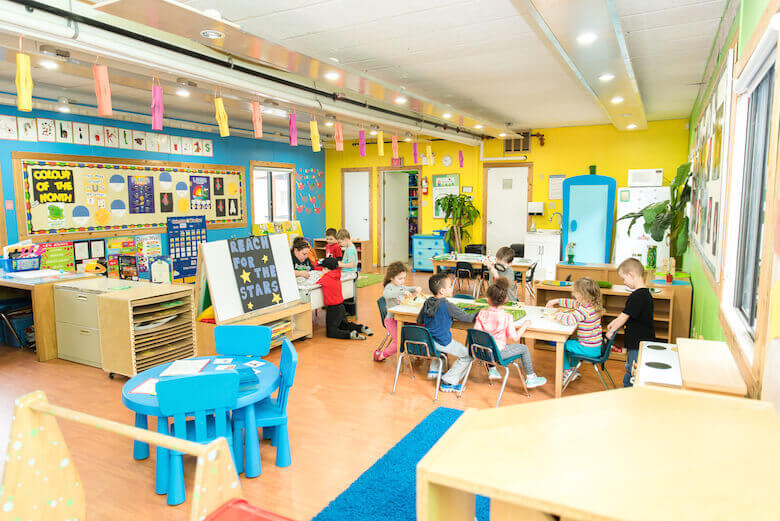Daycares: Positives and Negatives Clash
Every day, hundreds of parents have the necessity to take their kids to a daycare or in-home cares. Parents are responsible to go every day and work for their kids, for this reason they have the necessity to find a place where their kids can stay “safe.”
According to the Census Bureau Data, 6.7 million children receive care from a nonrelative, including 4.8 million children who assist to preschool or daycare facilities. Many of these facilities are not affordable as they should be but because they are taking care of kids all day, their price range per day goes from $50 to $200 per day. The more activities available and longer hours open, the higher the prices are.
Due to higher prices of daycares, many parents try to look for affordable places without knowing that most of those places are not capacitated for kids. A daycare must go through many steps such as licenses and regulations for the place and their staff, to be call a daycare.
According to childacare.gov, when you are looking for a daycare these are some of the important details you need to make sure they offer: license from the state or local government, safety of the building, the amount of kids and adults that are going to supervised the kids (child-staff ratio), nutrition of food serve to child, Immunizations, handwashing, diapering, and other methods to stop the spread of disease, training, health, and other requirements for the adults working at the child care program.

Those are the most important details parents should be aware when trying to find a daycare for their kids. Even though many of them count with licenses, licensing does not guarantee quality, however, it sets minimum requirements and ensures that programs are monitored for compliance with these requirements.
Not all the parents are lucky to find an adequate place for their kids. Laura and Emmanuel thought they found a great daycare facility for their kid. Sebastian was 4 years old, when they decided to send him for the first time to a preschool facility. Sebastian was under his grandparent’s supervision before daycare. Laura and Emmanuel went to check the facilities, they asked some friends about the place and they made sure it was a good option. Everything seem great, until the first day when they noticed they were not allowed to go with the kids inside, just drop them at the entrance. They did not complaint about it because they thought it was a procedure in order to keep kids from crying. Days kept passing and Sebastian started to refuse to go the daycare. “He used to say to me, please mom don’t leave me there,” Laura remembered.
“I was scare, and I asked my husband, but we thought it was normal since he had to go through the transition of being with family members to a new place,” Laura says.
Laura’s parents and sister started to worry about Sebastian’s behavior because he used to cry every morning before going to school. Laura was worry too but she was trying to wait for a couple more days, since he was there only for a couple of weeks.
“Every day he used to cry, he used to say the teacher was not gentle as she was supposed to be,” Emmanuel says.
After a couple of weeks, Laura and Emmanuel were looking for another place for Sebastian, however what made them took a decision right away was picking up their kid with wet pants.
“When I went to pick up Sebastian, he came with his pants wet, I asked them why they didn’t change him and their excuse was, they didn’t noticed it,” Laura explains. She said she felt discrimination against her son. She knew her kid was the only one Hispanic and maybe for this reason he was receiving this kind of treatment. She felt indignation thinking about her kid being with wet pants the whole day.
After this experience, they started to look for a different place. They recognized that since it was their first time looking for a daycare, they didn’t have the necessary experience to know about the rights a kid and a parent have. They also recognize that not all the daycares are bad or have bad organization. In the new daycare, Sebastian is comfortable, learning and have a lot of friends. “it may more expensive than the previous one, but it is worth it,” the parents say.

This kind of situation are the ones that force parents to spend thousands of dollars in daycares. They prefer to keep their kids secure instead of keeping children suffering in places where are not capable to take care of kids.
Besides daycare, there are the persons, women most of the time who are babysitters. Depending on the family income, parents try to find babysitters that are good for their pocket. However, many of these babysitters are not capacitated to take care of children.
“I got out early from school that day and went to look for my kid, he was there, in the same spot I left him at 6 a.m. He was crying, with his pamper full and not breakfast yet. It was 11 a.m. and the babysitter didn’t pay attention to him at all,” recalls Yahaira.
Yahaira is a young mother, she became pregnant when she was 15 and she kept going to high school after giving birth to her first son. She was unable to put her son in a daycare since she didn’t work or have the money to afford one. She decided to leave her kid with her neighbor who used to be known as a “babysitter” too.
She can’t understand how people make themselves call babysitters if they are going to treat kids bad. She is being working in daycares now and as a personal babysitter, she feels the necessity to take care of those kids as if they were her children.
“Kids don’t understand why you treat them bad; they just want love, their parents have to sacrifice their time with them to go to work, and as a caregiver our job is to take care for them with love,” she says. Babysitters just as daycares are supposed to go through a process of acquiring many licenses such as CPR/First Aid, babysitter license and most important experience. Many parents forget to check or ask for those licenses or referrals. Also, most of the parents feel that if they ask about it, they will lose the chance to leave their kids with these “nice babysitters”.
Many parents try their best on finding an affordable and safe place for their kids, they do not care on paying extra just to keep their kids on a safe environment. However, when parents feel obligated to leave their kids on the most affordable place is always not the best option. Why? Because many of this “affordable” places are also the ones that are not capacitated to take care of those kids.
Differences are, in a daycare, a child will not receive as much individual attention and may get sick more often. An in-home daycare is often the least expensive child-care option and reflects the home environment while still offering some of the benefits of a larger center. However, home daycares are also less regulated and organized than a center. With a babysitter, you have someone that works with your schedule, it may be able to come to your house and give you that tranquility that your kids are “home”. Unfortunately, your babysitter has little oversight and can quit at any time.
What parents should have in mind is that with a babysitter you are able to ask for proofs on how the child is doing throughout the day.
Romina, an experienced babysitter for years, says she works with parents on everything they need to know about the kids. Babysitters are supposed to have a schedule and give it to the parents once they arrive. She says that parents have the right to ask for pictures or videos, or even to install cameras in their houses to check on their kids. That is a good side of having a babysitter at home. Babysitters must stick to parent’s rules too, such as limited tv time or electronics, nap times etc.
As a mother, Romina has the experience on what to ask or the rights a parent have when dealing with daycares, in-home care or babysitters. She agrees with other parents on always finding a responsible place to leave your kids. Otherwise, the best option is to stay home with their kids since many low-income families do not see the difference on working just to pay a daycare facility.
Nowadays there are many facilities and places where parents can leave their kids, however not all of them are responsible on obtaining the necessary licensing or follow the protocols.
An exterminator company released information about a visit to an in-home daycare. The house was infested with cockroaches. Every time he was opening a door, the cockroaches were falling like ashes. Parents didn’t know about it, and they will never find out. The lady who was on charge, used to call the exterminator after all kids were gone or during weekends. She wanted the exterminator to go from the back door so no one could see him.
Daycares are not the only unsafe places; many families have been affected due to misbehaving babysitters. When parents trust a person to take care of their kids, they should check those “nanny” or “babysitters” as much as they can.
According to data from the National Child Abuse and Neglect Data System (NCANDS), 49 States reported a total of 1,700 fatalities. Based on these data, a nationally estimated 1,750 children died from abuse or neglect in Federal Fiscal Year 2016, which is 7.4 percent more than in 2012. This translates to a rate of 2.36 children per 100,000 children in the general population and an average of nearly five children dying every day from abuse or neglect. NCANDS defines “child fatality” as the death of a child caused by an injury resulting from abuse or neglect or where abuse or neglect was a contributing factor.

Adriana Saad is from Ecuador. Her grandmother brought her over when she was 15 years-old for a better future. She jokes that her plan did not go as she...








